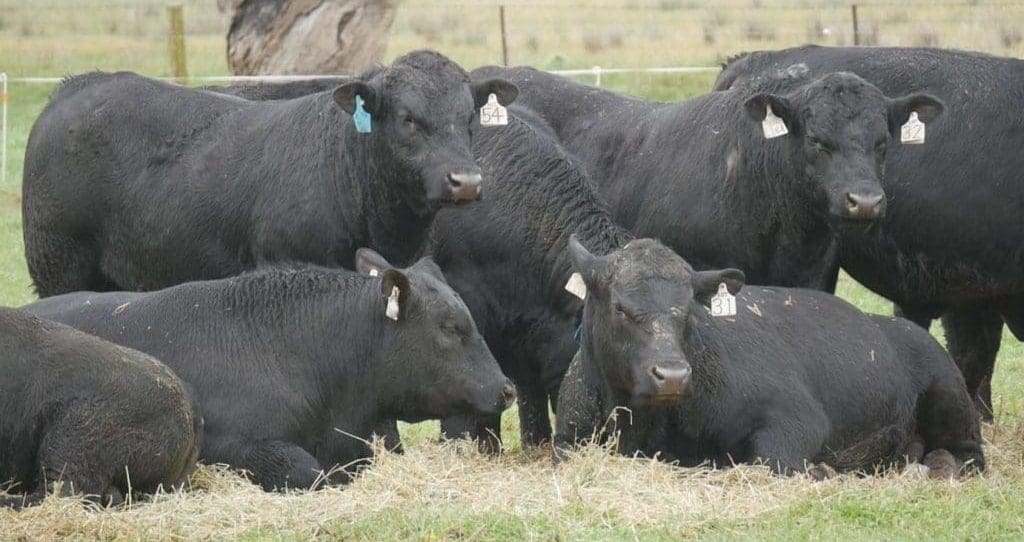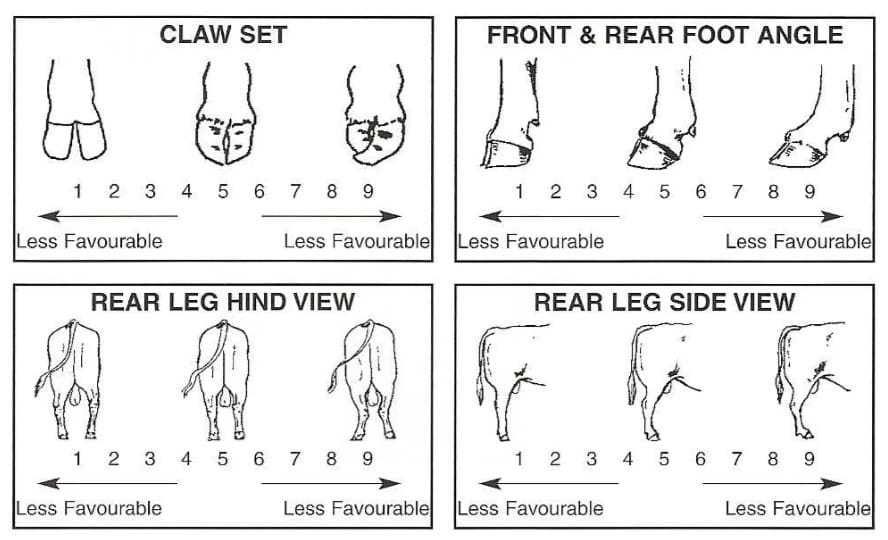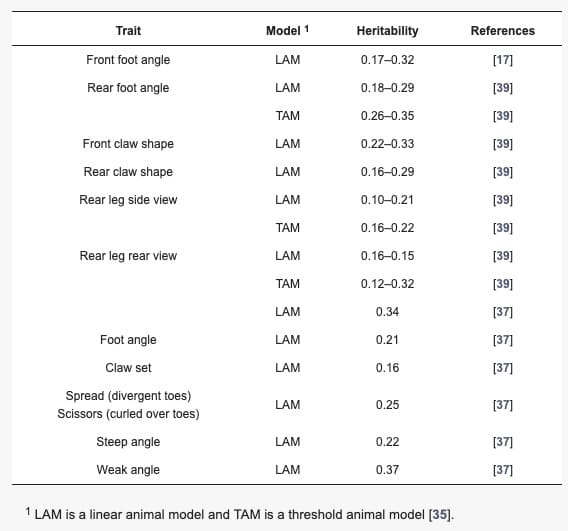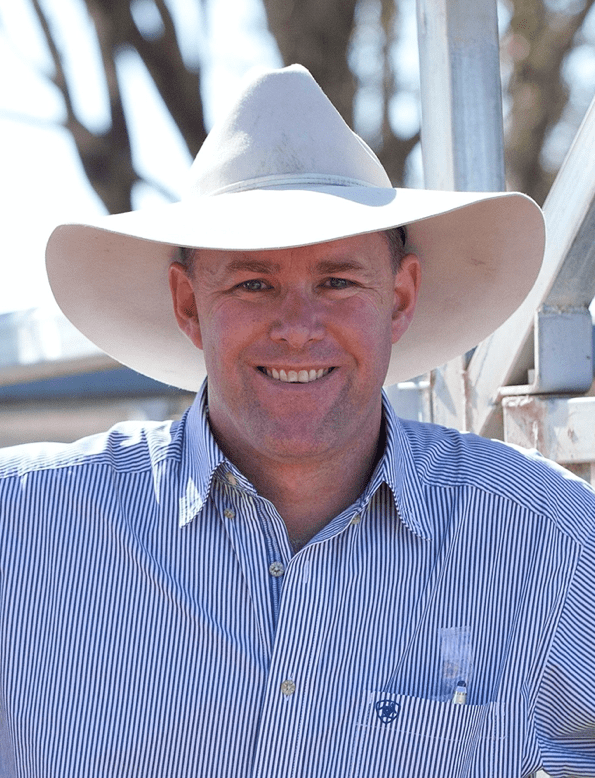
THE topic of structural soundness is frequently raised among beef producers and bull breeders.
In the three years I have been writing this genetics column, structure is the subject of most of the feedback I receive, as well as the most suggested subject for weekly columns. In general, the trend of the feedback, and discussions I have had with beef producers and bull breeders tends to reflect a feeling that structure is actually becoming worse in a number of breeds.
While this may be the general sentiment, I find that it is actually quite hard to objectively prove this belief. It is also quite difficult to quantify the impressions and set a benchmark for breeds so that it becomes possible to determine which way a herd, or a breed is actually moving.
This shouldn’t actually be the case. As an industry we are fortunate to have a well-defined structural assessment system. The Beef Class Structural Assessment System (see illustration below) uses a score from 1-9 to rank feet and legs of cattle. A score of 5 is ideal, with scores moving away from 5 indicating the divergence away from ideal.

The ClassiMate system takes these scores a step further, combining the individual scores for feet and legs, along with shoulders, sheath, head (eyes and jaw) and muscle score to provide a score out of 10 for animals assessed.
Both systems are easily accessible and readily available to bull breeders and beef producers. However, the general uptake and use of these system does appear to be fairly low, which is interesting considering how frequently structure is mentioned around the industry.
An additional issue is there are wide interpretations among stakeholders around structure. Most of these are subjective descriptions, with ranking ranging from “good to poor”; “bad or awful”. It is common to hear producers attending bull sales say, “he has to have good feet”, or “I can’t look at those bulls, their feet are terrible.”
While it is easy to understand the sentiment being expressed, subjectiveness is very hard to measure. There are too many questions that are left unanswered by these statements.
Some that spring to mind include: “What makes them terrible? Is it the angle of the foot? Are the claws incorrectly shaped? Are the feet all square or is one turned out?” These are just a few questions. And overriding all of these are the tolerances and expectations an individual has for structure to meet their own herd objectives.
Heritability
As a trait, structure is fairly heritable. Some studies indicate a heritability of around 0.25 – 0.3 for feet and leg traits.
A paper published last year by the Department of Animal Science at Montana State University refers to several studies by American and Australian sources. The paper published work showing that “In yearling-age Angus cattle in America, heritability estimates for foot conformation range from 0.16 to 0.37. Similarly, the American Simmental Association found a moderate heritability estimate (h2 = 0.20) for traits related to rear foot pastern angle. Moreover, the Australian Angus Association has estimated moderate heritability (h2 = 0.20–0.30) across six different foot and leg traits. Heritability estimates are moderately to lowly heritable for most foot and leg traits.”

Compilation of heritability estimates of various foot and leg structural traits in Angus cattle from Hahn, Jeyaruban, and Wang. Source: Importance of Foot and Leg Structure for Beef Cattle in Forage-Based Production Systems: Dept of Animal Science, Montana State U
With this data in mind, improving structure within a herd or a breed is genetically possible. As last week’s column discussed, progress isn’t just about selecting heritable traits, it is important to also consider the variation within the traits.
In Australia, not all breeds collect or publish structural EBVs. Angus Australia publishes EBVs for Claw Set, Foot Angle and Leg Angle.
Claw Set EBVs are published as estimates of genetic differences in claw set structure. Lower Claw Set EBVs indicate an animal is expected to produce progeny with, on average, a lower score for claw set (i.e. more even claws with less curl). The most recent TACE EBVs published by Angus Australia show the lowest score (Top 1pc of the breed) as +0.42 and ranges to +1.30 for bulls in the bottom 99pc. Similar variation extends for the other published traits.
While genetic selection is a very valuable tool available to maintain or improve structure, so too is physical assessment. The Beef Class Structural Assessment System is a relatively straight forward system that can be used by anyone. It is important to remember that for BreedPlan, data is a combination of producer data and data submitted by accredited assessors.
Nonetheless, even as a system used internally by breeders and producers, there is scope to put greater objectivity around structure. To make progress, we have to move away from the subjective statements that structure is getting worse, and instead measure and define the change.
In working with beef producers and bull breeders, the number of people who make the effort to assess and score their animals, both in the breeding herd or in the next group of bulls that are to be offered at sale, is much lower than you would expect.
Identifying and removing the animals with the more obvious structural issues is always relatively straight forward, and most people do this without any challenge. However over time, issues that are overlooked or not picked up early will grow.
Although some seedstock producers are more diligent in recording and managing structure than others, it can also be a case of being so familiar with their cattle, they don’t see issues that an outside set of eyes may see
The only way to effectively manage and prevent this is to have an objective system in place. There is a saying, “If you don’t measure it, you can’t manage it,” and this does apply to structural soundness.
Perhaps the final challenge, and certainly for some, the most difficult, is to have discussion and conversations with bull breeders around structure. Although some seedstock producers are more diligent in recording and managing structure than others, it can also be a case of being so familiar with their cattle, they don’t see issues that an outside set of eyes may see.
It isn’t always easy to initiate a conversation that draws attention to an issue. However most bull breeders would probably appreciate the conversation more, than having their program described to others as being off track or worse.
Ultimately, as with any part of cattle breeding, improvement only comes from focussing on the issues and having a clear objective in mind. It will be much easier to address and improve structure when objective systems are used in preference to the traditional, “good, ok, bad, terrible” ranking we have used for a long time.
Using the combination of genetic tools and objective visual selection, both commercially and in seedstock herds, we may start to see progression reflecting the expectations so commonly shared by producers.
 Alastair Rayner is the Principal of RaynerAg, an agricultural advisory service based in NSW. RaynerAg is affiliated with BJA Stock & Station Agents. He regularly lists and sell cattle for clients as well attending bull sales to support client purchases. Alastair provides pre-sale selections and classifications for seedstock producers in NSW, Qld, and Victoria. He can be contacted here or through his website www.raynerag.com.au
Alastair Rayner is the Principal of RaynerAg, an agricultural advisory service based in NSW. RaynerAg is affiliated with BJA Stock & Station Agents. He regularly lists and sell cattle for clients as well attending bull sales to support client purchases. Alastair provides pre-sale selections and classifications for seedstock producers in NSW, Qld, and Victoria. He can be contacted here or through his website www.raynerag.com.au



As an ex rancher from Zimbabwe and Botswana, and seed-stock producer to boot, structural soundness in bull selection ranked number one.
A bull has to be able to walk distance in large scale ranching operations and get the job done of servicing his females. He is not going to be inclined to do his business should he feel any discomfort when trying to perform or even foraging for his food.
The showring forme should be and is a class room for others and as a judge I treated it as such and paid strict attention to structural soundness. When a particular breed is popular the respective seed-stock producers tend to lower their breed standards chasing economical returns only to suffer the consequences further down the line as the breed falls out of favour.
Well done to the Santa Gertrudis society for leading the way in Australia.
A Ferrari simply will not perform correctly if the incorrect tyres or lower grade fuel is used!
I believe this should be addressed in the show ring as well as the sale yard. Too many “School System” judges are told not to point out faults with livestock, I would suggest that with some of the breeders these days only being part time cattlemen, a lesson in what the judge/industry is requiring as to certain standards of structural correctness should be addressed, but in a polite way. A lot of the issues faced today have made their debut in a show ring somewhere around the globe and been seen to be accepted by industry.
I refer to your own commentary below.
It is common to hear producers attending bull sales say, “he has to have good feet”, or “I can’t look at those bulls, their feet are terrible.”
You can’t argue with potential buyers making these comments because as we all know, the customer is always right. If an animal has bad foot or leg structure, it is just that and you can’t argue with that. I believe far too many seedstock breeders accept mediocrity and therefore their herd’s foot and leg structure will never improve like those that accept what is in front of them and make the effort to improve. While we all agree objective measurement of anything is far better than subjective if an animal has objective score 9 claw structure it is quite obvious to those inspecting animals for possible purchase, so it becomes a subjective assessment also. Therefore, Beef Class Assessment is subjective and only when you submit that data does it become objective. Bad feet are bad feet regardless of how you look at it or measure it and that is why many producers are of the opinion that the foot structure of many seedstock animals being offered for sale is getting worse.
As far as I am aware, Santa Gertrudis is the only breed where it is compulsory for an animal to pass a structural assessment (Classification) examination to be entered into the breeds Studbook. This helps eliminate sub-standard animals from being permitted to breed further seedstock.